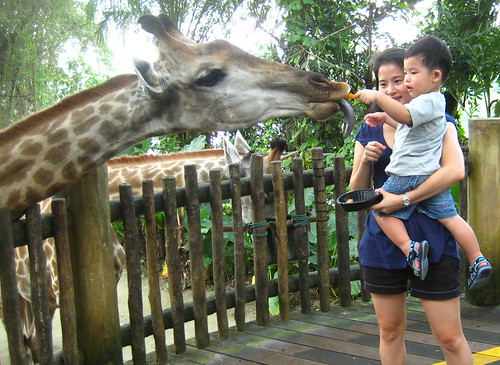When I asked K which animal he wanted to see at the zoo this morning. He told me, “Giraffe”. As we got to the giraffe enclosure, he was all gamed to feed the giraffe.
My bold little one showed no fear for the ‘gentle giant’ and only showed a slight flicker of disgust when the giraffe’s over-enthusiastic long purple tongue left a bit of saliva on his left hand.
K is displaying more of his boldness and need for independence. He now tells me, “Don’t hold hands”, and prefers to walk by himself. I find myself getting really naggy as I say these words repeatedly when we are out of the house; “Stay next to mummy…don’t walk away…where are you going…turn back…watch your step…come here…”
Two is a really adorable age, however it does get really challenging sometimes. From the words of a really experienced mom, Lay Keng (Seth’s mom, she has 4 children), “Persevere in your discipline and set limits, don’t give in. It will surely get better once he turns three.” I really hope so.


























